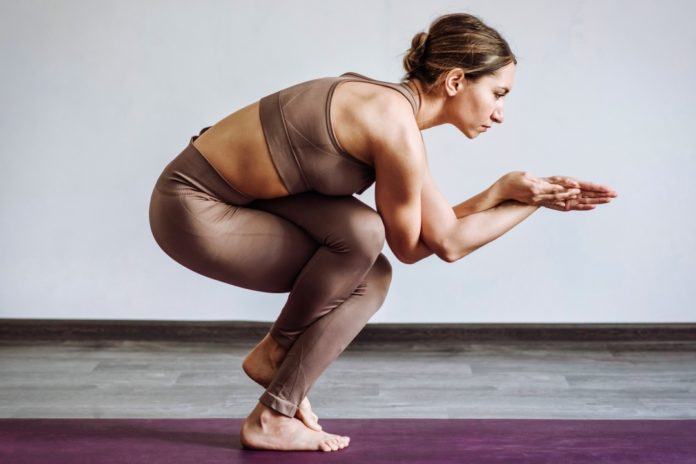Perhaps you’ve been practicing yoga for a while now or even teaching it. You’ve spent hours trying to nail all the poses and their names, even in Sanskrit. You understand the difference between the Warrior poses and your Plank is as steady as a rock. But there’s much more to yoga than just improving your balance, strengthening your core, or helping you sleep better. Each asana’s form and name is rife with spiritual meaning and connection to something deeper than the physical world. Knowing the symbolism in common yoga poses can empower, inspire and deepen your yoga practice.
Why study the symbolism of yoga postures?
Yoga is a rich tradition that is full of symbolic meaning. The classic yoga poses can be seen as a language, a means of communication between the body and the mind. Learning and understanding the yoga pose symbols can help boost your focus and concentration and deepen your spiritual practice of the postures. Understanding the symbolism in common yoga poses can help you achieve a deeper level of body awareness and life satisfaction. They strengthen and support a dedicated yoga practice and provide insight into some key themes that run through many yoga traditions.
Yoga poses as symbols
Animals, elements of nature, and the names of ancient sages are the inspiration for many of the names of the yoga poses. The ancient yogis understood the power of symbols and used them to quickly convey the spirt, energy and shape of each asana. Practicing a posture with the awareness of the symbolic story behind them can add a new layer of meaning and insight. It can also add a sense of play, delight and wonder in your yoga practice.
What do yoga poses symbolize?
Mountain pose
This pose might seem simple, but its meaning and symbolism run deeper than you think. In Sanskrit, this pose is known as Tadasana, with ‘tada’ meaning mountain and ‘asana’ meaning posture. The mountain pose is also known as the Samasthiti which is derived from the word “Sama,” that means upright and unmoving and “Sthiti” which means still and steady. This pose is the foundation for all standing poses and evokes stillness, strength, stability, and power, just like a mountain.
Most people don’t pay enough attention to the way they stand, and overtime many develop an imbalance in the hips and spine. This pose works to create a lightness in the body, serves to ground us down to earth, and invites a steady energy into the body.
Child’s pose
Unlike other symbols, Child’s pose is straightforward and relatively easy to understand. It’s simply symbolic of the childlike curiosity that’s lost in adulthood. This fetal position pose is very satisfying after a long day or vigorous yoga class, to draw up feelings of comfort and security.
By recreating these feelings from childhood and even before birth, you’re surrendering down to the earth, settling into our deepest selves, which can release unnecessary tension. In fact, 54% of yoga lovers said that practicing yoga poses helps them release tension. The symbol here can guide you to reconnect with a time in which you felt no stress or tension, only joy.
Warrior Two pose
Warrior II is a symbol of the fearless warrior Virabhadra who was said to have defeated their enemies with a thousand arms. This pose is meant to channel determination, courage and strength. The best way to use this pose is to approach it as metaphor for the challenges in our lives being just like real battlefields. The strength of Warrior Two can evoke the feelings of being a real warrior fighting through a battlefield or persevering through your challenges with power and inner strength.
Corpse pose
Savasana, or Corpse pose, can seem morbid at first, but when viewed differently as the symbol for the circle of life, it can be deeply healing for your mind, body, and spirit. As you lie back, you should imagine letting all the dead parts of yourself fall away into the earth or up into the air.
It can be hard to surrender yourself and your feelings to allow Savasna to really work, but you should get better at with enough practice. In the long run, a pose such as this can be really therapeutic and help work toward feeling better in yourself. Around 42% of yoga practitioners surveyed insisted that yoga increased their personal well-being. In many cases, this works best when this deeper connection with the poses and their meanings is found.
Eagle pose
This yoga pose’s symbol is right there in its name. The eagle is a regal bird known for its strength and various myths as a messenger of God. As you sit in the pose, you can visualize yourself taking flight between spiritual and earthly planes. Your new eagle eye of the world should take in a greater life perspective as just one of the many great benefits of practicing yoga.
Eagle pose requires great focus and a lot of patience. Think of it like this: getting stuck on all the negative challenges or difficulties of life may be easy, much like how difficult this pose can be at first, but a calmness and the right amount of focus can help you on your journey. Eagle Pose helps us to see what is important in life.
Conclusion
The benefits of yoga are plenty and can reward you with a lifetime of joy, health, and happiness when executed with mindful awareness and clear intentions. Understanding not only how to do a pose but the symbolism and the meaning behind each one can allow for this to happen more deeply and also easily, like unlocking a door within yourself. These symbols aren’t limitations but more ways in which you can explore yoga and its possibilities.
What does your favorite yoga pose symbolize to you? Are you curious about the spiritual meanings behind other popular yoga poses? Let us know in the comments below!


























